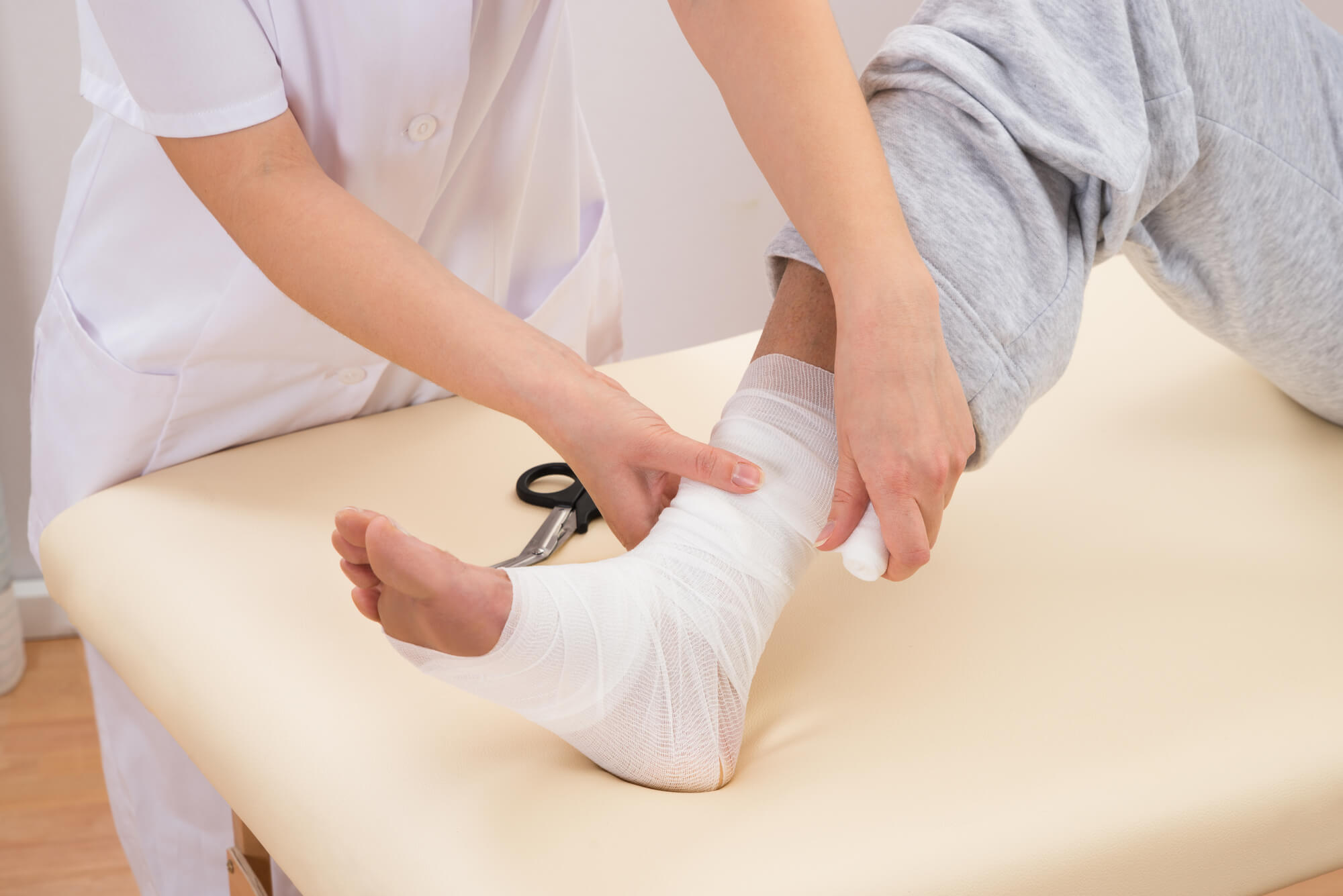Types of Foot Surgery
Foot surgery is a procedure performed on the foot or ankle to correct various issues, such as deformities, injuries, and conditions that cause pain or difficulty with mobility. If you are experiencing foot or ankle problems and cannot find relief through conservative treatments such as medications, physical therapy, or other non-surgical measures, your podiatrist or foot and ankle surgeon may recommend a surgical procedure.
What Is Foot Surgery?
Foot surgery is a procedure performed on the foot or ankle to correct various issues, such as deformities, injuries, and conditions that cause pain or difficulty with mobility. There are many different types of foot surgery, and the specific procedure recommended for you will depend on your individual condition and the goals of the surgery.

Why Might Someone Need Foot Surgery?
There are many different reasons why someone might need foot surgery. Some common indications for foot surgery include:
- Bunions: A bunion is a deformity that occurs when the big toe joint becomes misaligned, causing the big toe to point towards the other toes. This can cause pain and difficulty with mobility. Bunion surgery, also known as a bunionectomy, is a procedure to correct this deformity.
- Hammertoes: A hammertoe is a deformity that occurs when one or more toes become bent in a claw-like position. This can cause pain and difficulty with mobility. Hammertoe correction surgery is a procedure that is performed to correct this deformity.
- Neuroma: A neuroma is a benign growth occurring on a foot nerve. It can cause pain, numbness, and tingling in the affected area. Neuroma excision surgery is a procedure that is performed to remove the growth and alleviate these symptoms.
- Plantar fasciitis: Plantar fasciitis is a condition that causes inflammation of the plantar fascia, a ligament that runs along the bottom of the foot. It can cause heel pain and difficulty with mobility. Plantar fasciotomy surgery is a procedure that is performed to release the tension in the plantar fascia and alleviate these symptoms.
- Other conditions: Many other conditions can affect the foot and ankle, such as arthritis, fractures, and tendon problems, that may require surgery to correct.

Common Types of Foot Surgery
Bunionectomy
Bunionectomy is a surgical procedure that is performed to correct a bunion deformity. A bunion is a deformity that occurs when the big toe joint becomes misaligned, causing the big toe to point towards the other toes. This can cause pain and difficulty with mobility.
During a bunionectomy, the surgeon will make an incision in the skin over the bunion and remove any excess bone or tissue causing the deformity. The big toe joint may be realigned and secured with screws or pins. The incision is then closed with stitches, and the foot is dressed with a bandage.
Bunionectomy surgery is usually performed on an outpatient basis, meaning the patient can go home the same day as the procedure. Full recovery from bunionectomy surgery can take several weeks or months, and physical therapy may be recommended to help restore strength and range of motion to the foot.
Hammertoe Correction
Hammertoe correction surgery is usually performed on an outpatient basis, meaning that the patient can go home the same day as the procedure. Full recovery from hammertoe correction surgery can take several weeks or months, and physical therapy may be recommended to help restore strength and range of motion to the foot.
Neuroma Excision
Neuroma excision is a surgical procedure performed to remove a neuroma, a benign growth that occurs on a nerve in the foot. Neuromas can cause pain, numbness, and tingling in the affected area and may result from nerve irritation or damage.
During neuroma excision surgery, the surgeon will make an incision in the skin over the affected nerve and remove the neuroma. The incision is then closed with stitches, and the foot is dressed with a bandage.
Neuroma excision surgery is usually performed on an outpatient basis, meaning the patient can go home the same day as the procedure. Full recovery from neuroma excision surgery can take several weeks or months, and physical therapy may be recommended to help restore strength and range of motion to the foot.
Plantar Fasciotomy
Plantar fasciotomy is a surgical procedure performed to release tension in the plantar fascia, a ligament that runs along the bottom of the foot. Plantar fasciitis is a condition that causes inflammation of the plantar fascia and can cause heel pain and difficulty with mobility.
During plantar fasciotomy surgery, the surgeon will make an incision in the skin on the bottom of the foot and release the tension in the plantar fascia. The incision is then closed with stitches, and the foot is dressed with a bandage.
Plantar fasciotomy surgery is usually performed on an outpatient basis, meaning the patient can go home the same day as the procedure. Full recovery from plantar fasciotomy surgery can take several weeks or months, and physical therapy may be recommended to help restore strength and range of motion to the foot.

Recovery and Post-Surgery Care
What to Expect After Surgery
After foot surgery, it is normal to experience pain, swelling, and bruising in the affected area. Your surgeon will provide you with specific instructions for post-surgery care, which may include:
- Resting: It is important to rest the affected foot and avoid bearing weight on it for a period of time after surgery, as directed by your surgeon. You may need crutches or a walking boot to keep weight off the foot while it heals.
- Medications: Your surgeon may prescribe pain medications to help manage any discomfort you experience after surgery. It is important to take these medications as directed.
- Dressings: Your foot will be dressed with a bandage after surgery. It is important to keep the bandage clean and dry and follow your surgeon's instructions for changing it as needed.
- Physical therapy: Your surgeon may recommend physical therapy to help restore strength and range of motion to the foot after surgery. Physical therapy may involve exercises and stretches that you can do at home and visits to a physical therapist.

Managing Pain and Swelling
After foot surgery, it is normal to experience some pain and swelling in the affected area. To manage pain and swelling after foot surgery, you can try the following measures:
- Resting: It is important to rest the affected foot and avoid bearing weight on it for some time after surgery, as directed by your surgeon.
- Medications: Your surgeon may prescribe pain medications to help manage any discomfort you experience after surgery. It is important to take these medications as directed.
- Elevating: Elevating the affected foot above the level of your heart can help reduce swelling. Keep the foot elevated on a pillow or chair when sitting or lying down.
- Ice: Applying ice to the affected area can help reduce swelling and numb any pain you may be experiencing. Try to apply ice for 15-20 minutes at a time, several times a day.
- Compression: Wearing a compression bandage or stocking can help reduce swelling and support the foot.

Physical Therapy and Rehabilitation
Physical therapy and rehabilitation may be recommended after foot surgery to help restore strength and range of motion to the foot. Physical therapy may involve exercises and stretches that you can do at home and visits to a physical therapist.
Exercises that may be recommended by a physical therapist after foot surgery include:
- Range of motion exercises: These exercises involve gently moving the foot and ankle through their full range of motion to help improve flexibility and reduce stiffness.
- Strengthening exercises: These exercises involve using resistance bands or other equipment to help build strength in the foot and ankle muscles.
- Balance and coordination exercises: These exercises involve standing or walking on uneven surfaces or using balance boards to improve balance and coordination in the foot and ankle.
It is important to follow your surgeon's and physical therapist's instructions for post-surgery care and rehabilitation to ensure a successful recovery.

Risks and Considerations
Complications of Foot Surgery
Like any surgical procedure, foot surgery carries the risk of complications. Some possible complications of foot surgery include:
- Infection: It is possible for an infection to develop at the surgical site or elsewhere in the body after foot surgery. Symptoms of infection may include redness, swelling, and warmth at the surgical site, as well as fever and chills.
- Nerve damage: It is possible for nerves in the foot to be damaged during surgery, which can cause numbness, tingling, or weakness in the affected area.
- Blood clots: Blood clots can form in the legs after foot surgery, which can be serious if they travel to the lungs. Symptoms of a blood clot may include swelling in the leg, pain, and redness.
- Non-healing wounds: In rare cases, the surgical wound may not heal properly after foot surgery. This can cause the wound to become infected or scar tissue to form.
When to Seek Medical Attention
It is important to follow your surgeon's instructions for post-surgery care and to keep all follow-up appointments as directed. If you experience any of the following symptoms after foot surgery, it is important to seek medical attention as soon as possible:
- Increased pain or swelling at the surgical site
- Redness, warmth, or pus at the surgical site
- Fever or chills
- Swelling in the leg
- Pain or difficulty breathing
Conclusion
Foot surgery is a procedure performed on the foot or ankle to correct various issues, such as deformities, injuries, and conditions that cause pain or difficulty with mobility. Many types of foot surgery include bunionectomy, hammertoe correction, neuroma excision, and plantar fasciotomy.
Recovery and post-surgery care may involve resting, taking medications, managing pain and swelling, and physical therapy and rehabilitation. As with any surgical procedure, there are risks and complications to consider, and it is important to seek medical attention if any concerning symptoms arise after surgery.
It is important to discuss your options and the potential risks and benefits of foot surgery with your surgeon to determine the best course of treatment for your individual needs.

